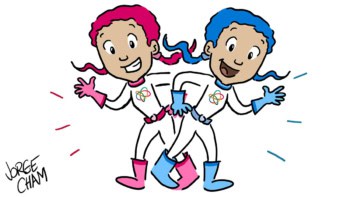
By Tushna Commissariat in Stockholm, Sweden
“Reality is a concept you can apply to your cats,” says Rainer Kaltenbaek to a room full of journalists and physicists, “so long as you don’t talk to Schrödinger.” Indeed, he warns us to not bother applying reality to anything that exists at the quantum level as we will just end up disappointed.
I am in Stockholm at a workshop for science writers being hosted at the Nordic Institute for Theoretical Physics (NORDITA) and the idea of completely forgetting “reality” is one of the many interesting things I have been pondering. Over the past two days we have discussed Bell’s loopholes, using your bathtub as an analogue laboratory to study black (and white) holes and learned about problems that even the best quantum computers (if they could be built) will not be able to solve.
One of the most intriguing proposals for a quantum experiment that I have come across is from Kaltenbaek, who is a part of Markus Aspelmeyer’s group at the University of Vienna in Austria. The experiment involves testing the quantum principle of superposition for large objects using quantum interferometers. While these objects are not quite the size of Schrödinger’s cats, the concept is similar. The idea is to use optically trapped nanospheres cooled to extremely low temperatures that would be dropped in free fall and produce an interference pattern indicative of superposition.
However, the tiny spheres would need to be in free fall for nearly 100 s, so the experiment is not really possible on Earth. Instead, Kaltenbaek wants to do it in space, with the experiment taking place outside of a spacecraft – the optical bench and all! This, according to Kaltenbaek, would solve the issue of having to cool the system, as well as the problem of the long free fall!
In the preprint “Macroscopic quantum resonators”, Kaltenbaek describes how the experiment could be built using technologies developed for the LISA Pathfinder space mission, which is due to launch next year.
Good luck getting that proposal off the ground! In my next instalment from Stockholm, I will explain why diamonds are a quantum physicist’s best friend.
For much more about the conference, you can follow me on Twitter at tushna42 and #nordita14. Also blogging from the event are physicist Chad Orzel and science blogger Sedeer el-Showk.



